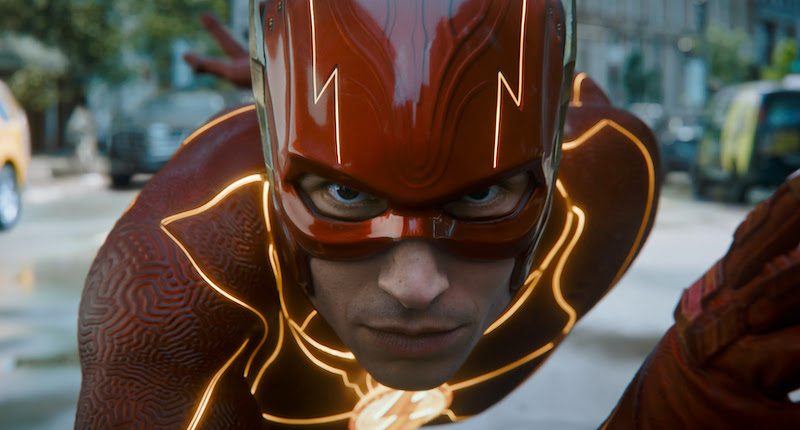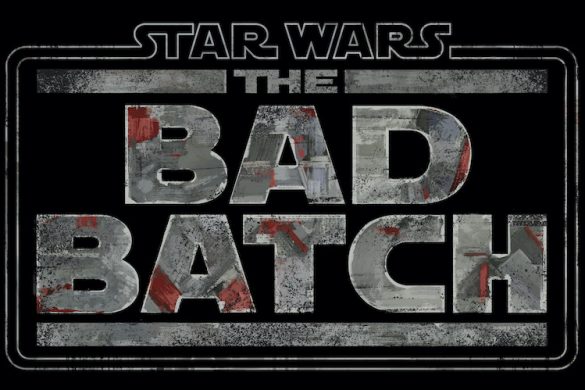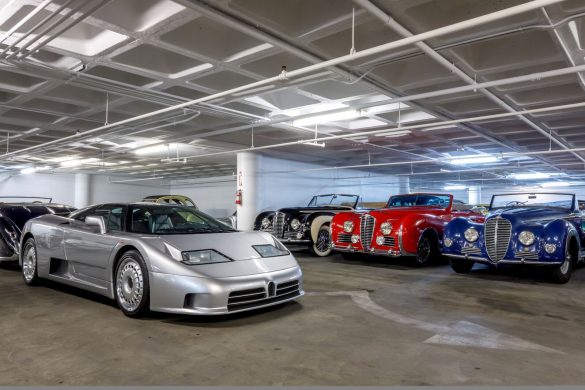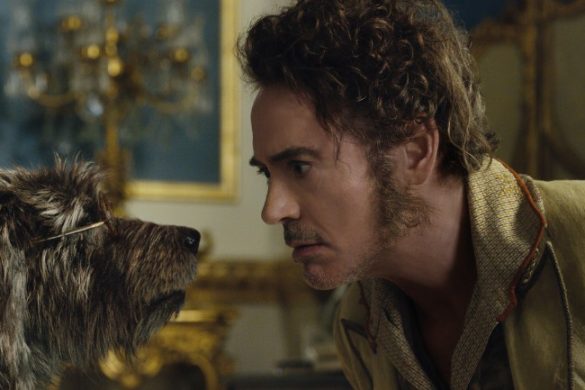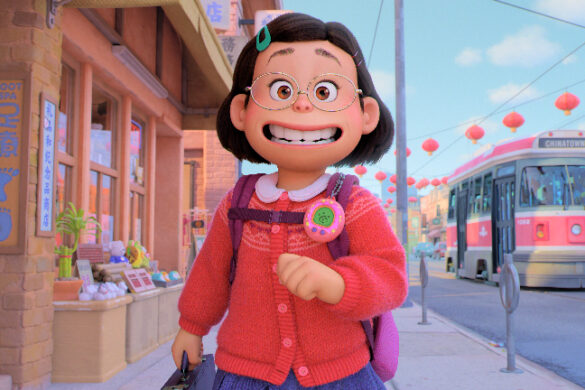Warner Bros. has tried to deliver an entertaining shared superhero universe with its top-tier DC heroes for the past ten years. There were valiant efforts to expand the universe outside the usual Batman and Superman flicks, with Aquaman, Wonder Woman, Suicide Squad, and Justice League as heroes and anti-heroes to shape the DCU. However, those films and soft reboots underwhelmed critics and bored audiences. So just as James Gunn steps in to give the franchise a much-needed creative overhaul, The Flash comes in with a burst of speed to try to save the day. Unfortunately, he may be too late to do anything about it. Imperfections with its use of CGI and fan service aside – along with Ezra Miller’s problematic history – the Speedesters’ cinematic debut is a solid introduction that also serves as a love letter to the Dark Knight.
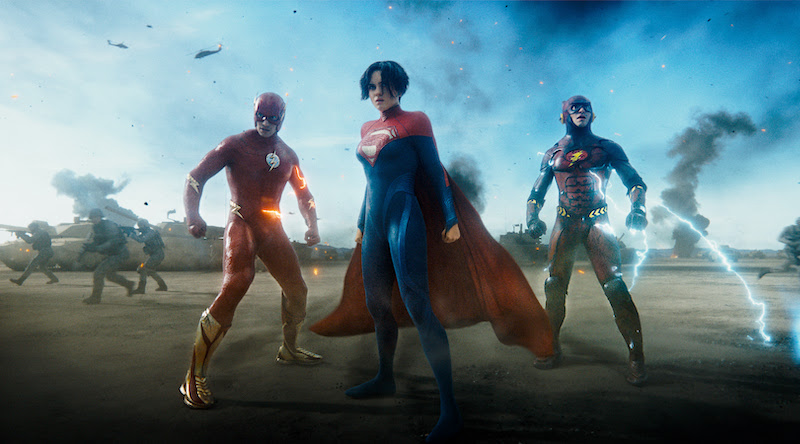
Barry Allen (Miller) is Central City’s forensic scientist known for being constantly late to work. However, that’s no fault of his own as he is frequently called to help Batman clean up the “Bat-Mess” whenever his fellow Justice Leaguers cannot answer the call. Seemingly aware of his role on the team, Barry tells Alfred that he is the janitor of the Justice League. It’s a comedic bit that seems to be keenly aware that Barry’s speed is both an asset to the team and a butt of a joke.
But even with all of his speed, Barry still feels powerless because he couldn’t keep his mother from being murdered or his father from being wrongly convicted for his murder. As such, he takes his anger and frustration out by running so fast that he obtains Speed Force – a power that allows its user to travel through time.
With the power to change history, Barry confides his newfound power to Bruce (Ben Affleck) because both share a tragic history of having their mothers murdered. While both lost their mother, each walked a different path to becoming the people and heroes they are now. So Bruce reveals to Barry how a singular focus leads to a depressing life of isolation and loneliness. And Barry’s father (Ron Livingston) doesn’t want his son to waste his life trying to save him from a broken justice system. The only thing is that Barry doesn’t want those emotional scars to define him, nor does he want to see his father rot away for a crime he did not commit. So the Speedster is eager to undo his mother’s murder and ignores Bruce’s warnings about the irreparable harm that could come to the present if the past is changed.
Barry believes he’s found a loophole allowing him to save his mother and father from their fates without interacting with them or himself. So, Barry speeds into the past without a second thought and can rescue his mother and father from their futures. But by doing so, he changes the timeline drastically and erases Aquaman, Cyborg, and Wonder Woman from their existence. Barry also meets a younger immature version of himself. He learns that the altered timeline has an older Bruce Wayne/Batman (Michael Keaton) and a Supergirl (Sasha Calle) instead of a Superman.
And so, the film becomes an exercise of examining hypotheticals and watching altered timelines through the superhero lens. “The Flash” draws much of its inspiration from the “Flashpoint” story arc, which also saw its character go back in time to save his mother, thereby changing the course of history by altering characters, relationships, and more. Though the film adaptation is slightly different, it changes the heroes we know and reuses some familiar villains like General Zod (Michael Shannon). So the film uses Barry’s desperation as its emotional anchor to have us care about his decision to go back to the past to save his mother and see the consequences of his actions.
Though he saves his mother and father from their fates, he also puts the world in danger as he effectively erases other heroes, including himself, from existence, which allows General Zod to begin his world domination. There is a Barry, just no Flash. With the world in danger, Barry must assemble a new Justice League while giving himself and his past self the powers of superhuman speed. Of course, this is no easy task with his past self unable to comprehend what is at stake, Bruce (Michael Keaton) retiring as Batman and now living like a hermit because he’s made Gotham the safest city to live in, and Kara-Zor El distrusting of humans since they’ve kept her in captivity.
When the plot gets fully fleshed out and DC’s interpretation of time travel and the multiverse gets explained, our heroes hit the ground running and head into battle to stop General Zod from succeeding with his plan to terraform Earth with the World Engine. The film wants us to sympathize with Barry’s decision to change the past, whether or not you agree. As such, our hero starts to notice the chronological changes that take hold. Whether through pop culture or his interpersonal relationships with fellow Justice Leaguers, this one choice to save his mom in the past unwittingly opens the door to a what if the DCU had been appropriately handled with the right creative minds.
Christina Hodson’s script is sunnier and more humorous than some previous DCU efforts. It moves rather organically for a film dealing with superheroes and time travel’s consequences. Watching the two Barrys work together is rather fun, with the elder Barry annoyed and frustrated that his powerless self could be so immature and the younger Barry not understanding why his interloping future self would ever interfere with his timeline. Barry must teach his younger and naive self how to use speed properly. The boy cannot know that running fast would create enough friction to burn regular clothes off. And there are other moments where we see how phasing through objects works and doesn’t work for both. Of course, that leads to hilarious conflicts between his present and past self and poignant moments emphasizing why Barry is so desperate to have what his younger self doesn’t seem to appreciate.
Using time travel as the film’s plot device is an opportunity to revisit some of our favorite characters while introducing new ones to the DCU. Michael Keaton reprising his role as Batman is like visiting an old friend we haven’t seen in years. Though this Batman is slightly different from the Tim Burton era, he’s still got the same comedic timing and heart. He’s stoic but connects with Barry over their similar tragedies. He doesn’t want to be the leader of Barry’s Justice League but accepts because Barry’s selflessness inspires him. But he moves differently this time as his fierce fighting style is modernized, unlike anything he would have done before. It’s not exactly a problem considering today’s generation gets to see what made Keaton the one and only Batman.
As for Sasha Calle, her Supergirl puts a refreshing twist on the child of Krypton landing on Earth story. As aforementioned, she isn’t exactly trusting of the humans after what she’s been through, which nearly aligns with comic book inspiration. Though her time is somewhat limited, Calle makes the most of what she’s got with an incredible performance and has us understand why she holds a grudge against humanity while also cheering for her when she decides to join the fight.
As the film builds up to its third act, Barry accepts that not every problem has a solution. Watching him go through all the permutations and possibilities of how he could save his mom is tragic because all of those paths lead to the same fate. And director Andrés Muschietti visualizes that in a cinematic way with a stunning but very chaotic third act. At times, this revelation looks exceptionally cool on the big screen but overwhelms the audience with its repetitiveness. Watching the two Barrys, Batman, and Supergirl fight Zod in the desert battlefield is nothing short of spectacular as it gives them the space to run and fly freely without worrying about the destruction of a metropolis.
The third sequence is full of electricity but can be dizzying at times as you feel the energy coursing through Barry’s veins as he runs from one point to the other at speeds so fast it makes everything else around him seem slow but are forced to follow him every step of the way. The visual effects of capturing the sensations of Barry’s speed are a spectacle as it puts its own unique signature on what a speedster sees with everything around him moving in slow motion. Of course, that is amplified to a more considerable extent since the scene calls for it. Everything is bigger and more explosive. It’s a far cry from when Muschetti used Barry’s speed for comedic effects in the film’s opening scene. But it allows us to see the emotional layers of this power.
But one of the visual downsides to the Flash using the speed force is when he finds himself in what can be described as a Chrono Bowl. The sunken amphitheater is a visual representation of Barry’s memories where the uncanny valley seems to flourish. All of the important people in Barry’s life exist in this one space, and they are all emotionless and expressionless dolls that take away from the emotional significance of the scene. And each time we visit this place, it takes away from what we should genuinely care about because all we can see is how lifeless and plastic these characters look.
Perhaps my biggest qualm is “The Flash’s” use of cameos and other easter eggs. While the multiverse and time variants are concepts we’ve explored in other films, “The Flash” uses relentless fan service in such a way that it doesn’t do anything to advance the story. And that is apparent when the Barrys confront the final big bad in the Chrono Bowl. There, he begins to see the consequences of his actions and what changing the timeline could do to his universe and others (some of which are fun callbacks while others are such a deep cut they may confuse some audience members). As distracting as these cameos are, “The Flash” would have been a much tighter film without the entire multiverse coming at you all at once and not having any bearing on Barry’s arc.
The jokes don’t always work, and the visuals could use some polishing. However, “The Flash” breaks away from the gloomy DCU mold to tell a story with plenty of heart and humor and has tons of fun visualizing the action and speed of DC’s fastest hero. It’s just too bad that this film had to arrive at a time when the DCU slate is in such shambles that it needs a reboot because what we could have had would have been great.
7.5/10
The Flash is in theaters June 16, 2023.

